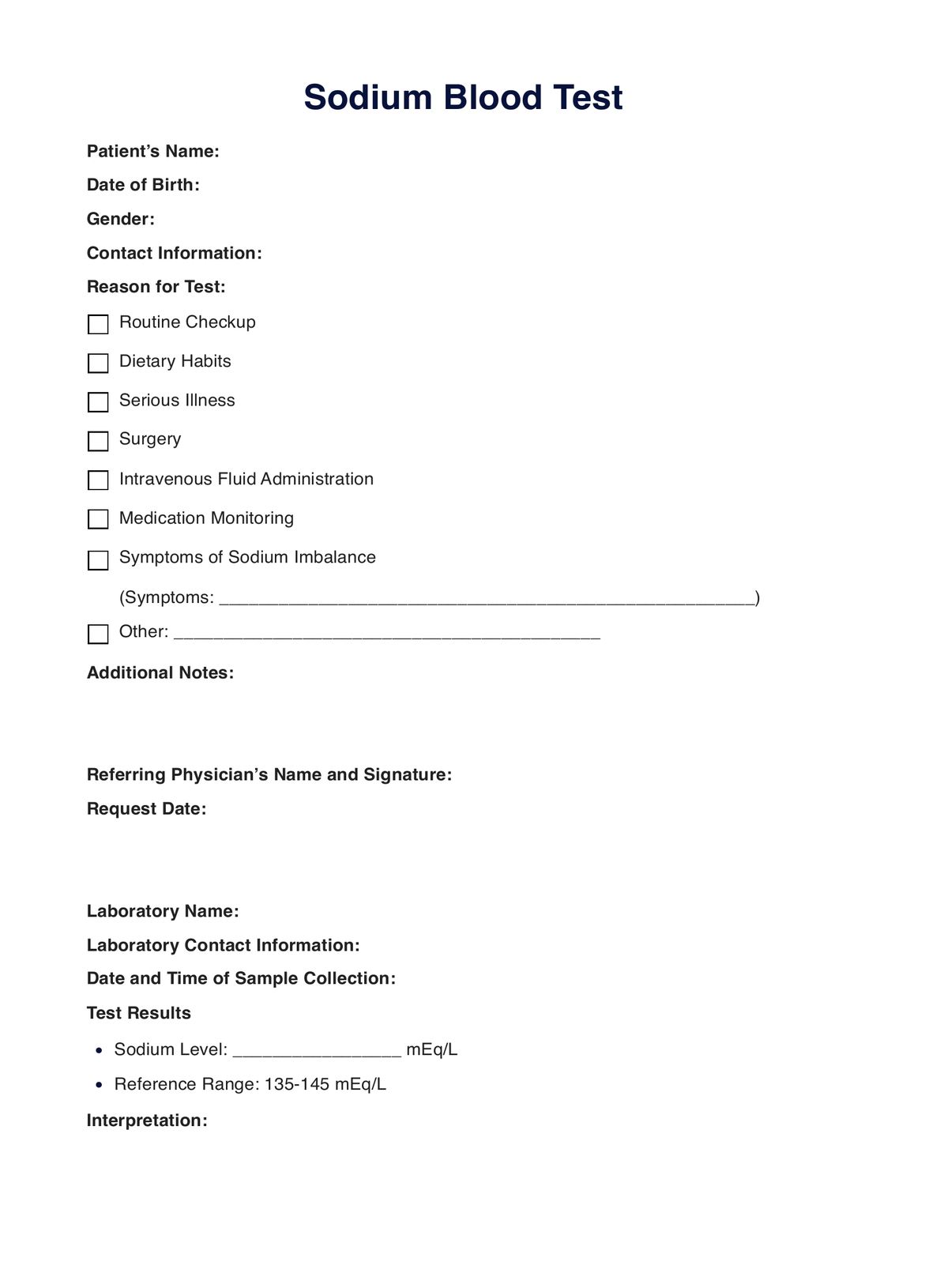General physicians, their assistants, and nurses are the ones who typically request sodium balance tests. More specifically, the referring physician caring for the patient fills out the request form.

Sodium Blood
Discover the uses, result interpretations, etc., of the sodium blood test by clicking here for more information and a free request form template.
Sodium Blood Template
Commonly asked questions
The sodium blood tests are used during routine checkups, formulation of diagnosis, and monitoring or managing treatment approaches that may affect a patient’s sodium levels or electrolyte balance.
Depending on the laboratory, the results of the sodium blood test can be available within the same day, after a day, after a few business days, or even weeks. Your referring physician may give you an estimate of how long you may have to wait however, it ultimately depends on the one processing the blood sample.
EHR and practice management software
Get started for free
*No credit card required
Free
$0/usd
Unlimited clients
Telehealth
1GB of storage
Client portal text
Automated billing and online payments











